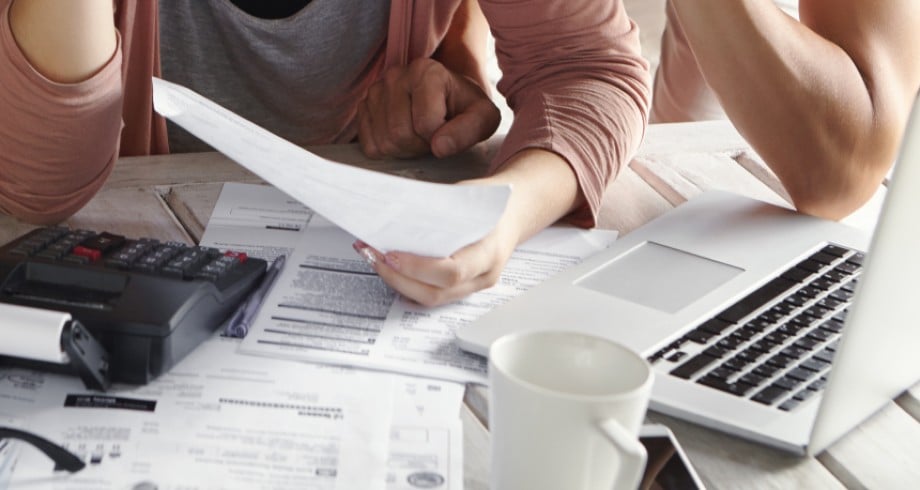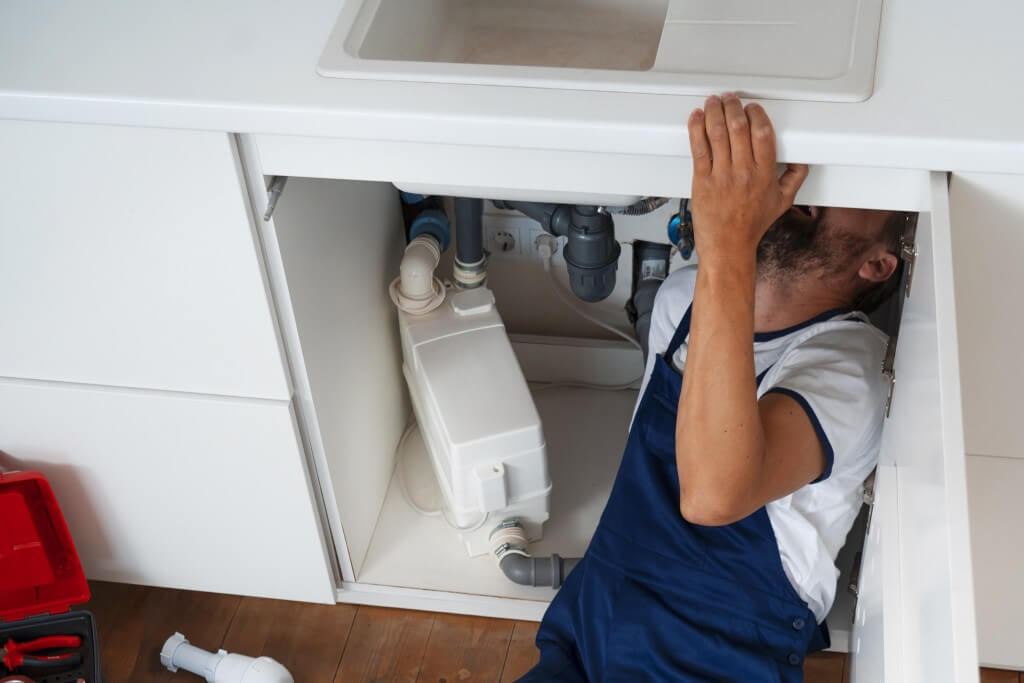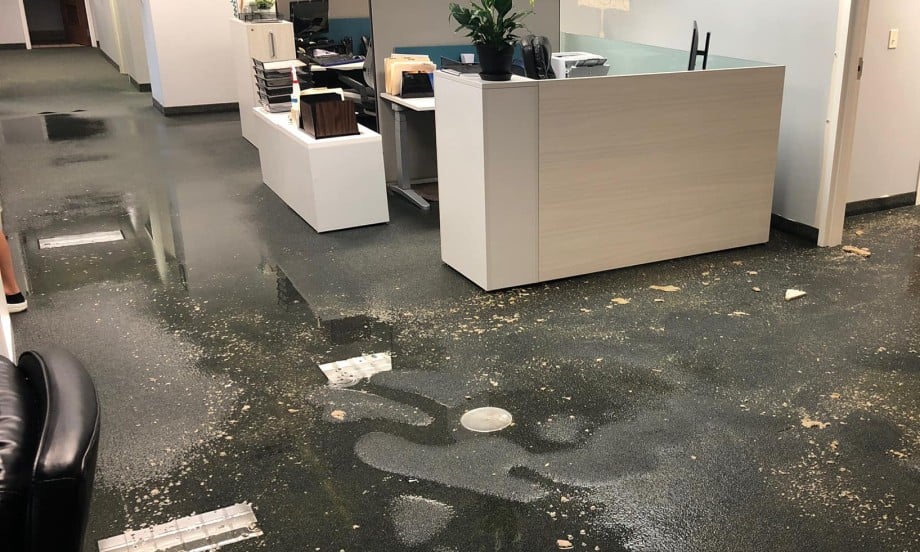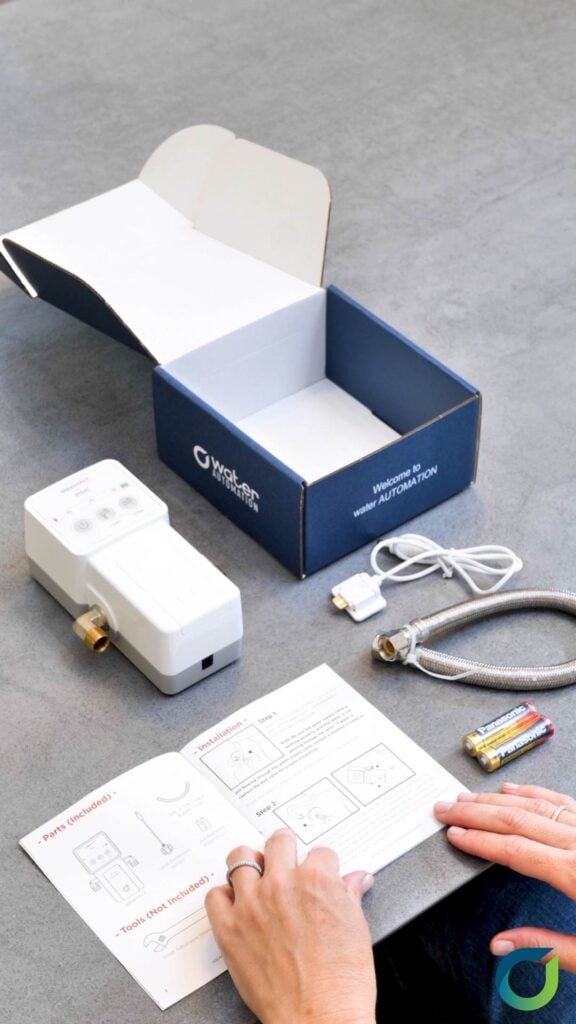
Water leaks are one of those things businesses hope to never deal with—but the truth is, they’re more common than we’d like to admit. The hidden cost of water leaks is often underestimated, with businesses losing hundreds or even thousands of dollars every year. The real question is: can water leak detection actually save you money? The answer is a resounding yes. In fact, water leak detection systems are quickly becoming one of the most effective ways for businesses to reduce waste, avoid costly repairs, and ensure operational efficiency. Let’s explore how detecting leaks early can save your business substantial amounts of money in the long run.
While a small leak might seem insignificant, it can cause substantial damage over time. Leaks in plumbing, pipes, or equipment not only waste water but also increase operational costs. Over time, a slow leak can lead to higher utility bills, water damage to equipment or facilities, and the potential for costly repairs. According to the U.S. Department of Energy, businesses lose an estimated $6 billion a year from water leaks. And it’s not just the direct cost of water—inefficiencies in water use lead to wasted energy, excess wear and tear on equipment, and, in some cases, even business downtime.
Water leak detection technology involves a combination of sensors, smart meters, and data analysis tools to pinpoint leaks before they turn into major issues. These systems monitor water pressure, flow rates, and temperature changes, sending real-time alerts if they detect any anomalies. By catching leaks early, businesses can take immediate action, preventing the situation from escalating into something far more expensive. Services like WaterAutomation.com provide comprehensive leak detection solutions tailored to your business needs.
The beauty of water leak detection lies in its ability to prevent larger problems before they start. With early detection, businesses can avoid the following:
Water leaks, no matter how small, can dramatically increase your water costs. According to the Environmental Protection Agency (EPA), a single leaky faucet that drips once per second can waste more than 3,000 gallons of water per year. By detecting these leaks early, businesses can stop the flow before it results in high water charges.
A small leak left unattended can lead to significant damage—whether it’s water damage to property, mold growth, or corrosion of equipment. These issues can lead to expensive repairs and replacements. Early leak detection means that businesses can fix the issue before it escalates into a larger, more costly problem.
Water leaks don’t just waste water; they also waste energy. If your business relies on heated or pumped water, a leaking system will result in energy being wasted. The more efficiently your water system operates, the less energy you use, leading to further cost savings.
A major leak can disrupt your entire operation. Whether it’s disrupting manufacturing processes, damaging electrical equipment, or shutting down an entire building, the costs of downtime can quickly add up. Early detection helps prevent these interruptions, saving both time and money.
For businesses in the hospitality, manufacturing, or retail sectors, water leaks can lead to poor customer experiences. Imagine a leaking pipe that disrupts your services or facilities—it could have a long-lasting effect on your reputation. Detecting and fixing leaks quickly means your operations stay smooth, and customers remain happy.
You might be thinking: “Is it really worth investing in leak detection technology?” The answer is yes. While the initial cost of implementing leak detection systems might seem like an expense, the savings you’ll see in the long run far outweigh it. Businesses can save thousands annually by avoiding high water bills, expensive repairs, and operational disruptions. Plus, the environmental benefits of reducing water waste align with corporate sustainability goals and can boost your brand’s image.
To start reaping the benefits of leak detection, begin by assessing your water infrastructure. Identify areas where leaks are most likely to occur—such as pipes, tanks, or outdoor irrigation systems. From there, partner with a professional water management company, like WaterAutomation.com, to install smart sensors and meters that can monitor your system 24/7. By tracking your water usage and detecting leaks in real-time, you can proactively manage your water consumption and minimize costs.
Water leak detection is a powerful tool that can save businesses substantial amounts of money in both the short and long term. From reducing water and energy waste to avoiding costly repairs and operational disruptions, the benefits are clear. It’s time to invest in technology that not only protects your bottom line but also supports your sustainability efforts. So, the next time you ask, “Can water leak detection save you money?” remember that it’s not just possible—it’s essential.

Hidden leaks are like the ninjas of home damage – silent, sneaky, and devastating. While you’re living your best life, they’re slowly waging war on your walls, floors, and savings.
You won’t hear them. You won’t see them. But one day, you’ll smell them. That’s usually the mold, announcing its victory.
It’s not dramatic to say that hidden leaks are one of the most expensive home problems that no one talks about – until it’s too late.
Water is a professional escape artist. Once it finds a weak point – a loose connection, a cracked seal, or a tiny pinhole in a pipe – it escapes quietly into places you can’t reach.
It travels along beams and insulation, soaking everything along the way. And because it’s hidden, you don’t notice it until:
By then, the damage isn’t just cosmetic – it’s structural.
If hidden leaks are the ninjas, mold is their evil sidekick. Once moisture lingers for more than 24–48 hours, mold spores throw a party.
They spread fast, latch onto porous materials, and start producing that lovely “damp basement” smell that every homeowner dreads.
And while it might start small, mold cleanup is no joke. Depending on how far it’s spread, mold remediation can cost anywhere from $1,200 to over $6,000 – not counting the damage it’s caused along the way.
Some homeowners spend months dealing with cleanup crews, insurance adjusters, and the emotional trauma of tossing out their favorite furniture. All because of one tiny leak.
Let’s put this into perspective:
Problem | Average Cost | Avoidable With Early Detection? |
|---|---|---|
Replacing water-damaged flooring | $2,500–$5,000 | ✅ Yes |
Mold remediation | $1,200–$6,000 | ✅ Yes |
Structural repair from rot | $5,000+ | ✅ Yes |
Water damage insurance claim | $11,000 average | ✅ Yes |
So when you compare that to the $150 price tag of aquaHALT, the math starts to make sense – prevention is the ultimate money-saver.
Some of the most common culprits for hidden leaks include:
Water doesn’t need an open tap to do damage – a single, tiny crack under pressure can release liters a day.
And the scary part? You won’t notice a thing until you step onto a warped floorboard or spot that telltale stain spreading across the ceiling.
Early detection isn’t just about saving money – it’s about keeping your home livable and your stress levels low.
When a hidden leak goes undetected, you’re in for:
Catching the leak early means you avoid all that. No stress, no surprises, no soggy carpets.
Now, imagine if your home had a tiny, tireless guardian that could hear trouble before it struck. That’s aquaHALT, created by waterAUTOMATION.
For just $150, you get a battery-powered leak detection device that works 24/7 – even during power cuts. It runs on 2×AA batteries, installs in seconds, and doesn’t need Wi-Fi, an app, or your Saturday afternoon.
Just place it near problem areas – under sinks, behind appliances, near your water heater – and it immediately starts listening for leaks.
When water appears where it shouldn’t, aquaHALT sounds the alarm before you’re knee-deep in trouble.
We live in an age where everything’s “smart.” But do you really need a leak detector that connects to the cloud, syncs with your toaster, and asks for monthly updates?
No. You just need something that works – reliably, quietly, and immediately.
That’s why aquaHALT’s simplicity is its superpower. It doesn’t rely on Wi-Fi or fancy integrations. It just protects your home, day and night, for pennies a day.
It’s like having a loyal guard dog for your plumbing system – minus the barking.
You don’t need to wait for mold, warped floors, or a swollen water bill to take action.
Preventing water damage isn’t rocket science – it’s awareness, preparation, and a little help from the right device.
So, before water sneaks up on you, sneak up on it.
Install aquaHALT once, sleep better forever.

Let’s be honest – home disasters don’t usually knock first. They kick the door down. One minute you’re watching TV, the next your laundry room looks like a kiddie pool.
Water leaks are sneaky like that. They strike when you’re least prepared – on holidays, overnight, or that one weekend you actually decided to relax.
But what if one small, $150 device could stop all of that before it even began?
Meet aquaHALT, the tiny hero by waterAUTOMATION that quietly stands guard while you’re out living your life.
In a world where everything needs charging, updating, and syncing, aquaHALT is refreshingly simple. It doesn’t need Wi-Fi, a smartphone app, or a 43-step setup process.
It runs on two AA batteries – that’s it. Pop them in, place the device where water might cause trouble (under your sink, behind your washing machine, near the water heater), and you’re done.
No monthly subscriptions. No pairing codes. No software updates at 2 a.m. Just old-fashioned reliability in a smart little package.
Sure, “smart home” leak detectors sound cool – until your Wi-Fi goes down, your app glitches, or your phone dies.
aquaHALT doesn’t care about Wi-Fi signals or firmware updates. It’s too busy doing its job:
listening 24/7 for the faintest sign of water where it doesn’t belong.
And when it finds one? It lets you know – immediately. Loudly.
Because the only thing worse than a leak is not knowing you have one.
At first glance, aquaHALT doesn’t look like much – just a compact device powered by two humble batteries. But under the hood, it’s a powerhouse of prevention.
Its high-sensitivity water sensors can detect even small amounts of moisture before they turn into major problems.
That means no more waking up to soggy carpets, dripping ceilings, or that dreaded “splash” sound when you step into the laundry room.
In other words, aquaHALT doesn’t wait for disaster – it prevents it.
One of the biggest myths about water damage is that it only happens in older homes.
Wrong.
Even brand-new builds can have leaks – from shifting foundations, loose fittings, or appliances that weren’t installed perfectly. Water doesn’t discriminate.
So whether your house is 30 days old or 30 years old, a leak detector is a must-have.
Think of aquaHALT as an equal-opportunity protector.
Leaks don’t punch time cards. They don’t take weekends off. That’s why aquaHALT never clocks out.
While you’re asleep, at work, or away for the holidays, it’s still watching, still listening, and still ready to sound the alarm if water shows up where it shouldn’t.
It’s like having a personal security guard for your plumbing system – minus the attitude and the coffee breaks.
Installing aquaHALT takes less time than making a cup of coffee:
That’s it. No wiring. No Bluetooth pairing. No instruction manual thicker than a novel.
Just quiet protection you don’t have to think about until it saves you.
It’s the kind of device you forget exists – until the day it saves you a fortune.
Our homes are getting smarter – but sometimes, simple tech wins the day.
aquaHALT is proof that you don’t need Wi-Fi, cloud syncing, or subscription plans to protect what matters.
Just a small device, a little foresight, and two AA batteries.
Leaks don’t care about your schedule, your new floor, or your peace of mind. But aquaHALT does.
For $150, it gives you round-the-clock protection, zero setup headaches, and the priceless satisfaction of outsmarting water itself.
Because the best home upgrades don’t just make life easier – they make it drier.

You’re making coffee, half-awake, when you notice that faint drip… drip… drip under the sink. It’s nothing major, you tell yourself – a few drops, maybe a loose pipe. You’ll fix it on the weekend.
Fast-forward two months. The floorboard’s warped, the cabinet door doesn’t close properly, and there’s a strange smell that Febreze can’t fix. Welcome to the world of water leaks – small, sneaky, and surprisingly destructive.
The thing about leaks is they’re patient. They wait quietly, often behind walls, under floors, or around fittings, while slowly transforming your house into an indoor swamp.
Most homeowners underestimate water. It doesn’t take a flood to cause major damage – just a tiny, persistent drip. Water has one mission: to go where it shouldn’t.
Here’s what that seemingly harmless trickle is really doing while you ignore it:
In fact, according to insurance data, the average household water-damage claim is around $11,000. That’s enough to buy 73 aquaHALT devices – each designed to stop the problem before it even begins.
There’s a fascinating thing about leaks – everyone knows they’re bad, but almost no one acts right away. Why? Because they don’t feel urgent… until they are.
When your roof leaks, you panic. When your pipe bursts, you panic. But when your sink slowly drips, you shrug. The irony? That drip can cause more long-term damage than either of those sudden disasters, because it quietly corrodes materials over time.
So if you’re thinking, “It’s just a few drops,” remember: those “few drops” might be the most expensive ones you ever ignore.
Leaks don’t exactly send invitations – but they do leave clues. Here are the telltale signs your home might be harboring a watery secret:
You haven’t started a backyard water park, but your bill looks like you did. A sudden spike usually means a hidden leak.
That “basement smell” upstairs isn’t normal. Moisture trapped in walls or under floors gives off that earthy, mildew-like odor.
Your walls are literally crying. Moisture trapped behind paint or paper causes bubbles, blisters, or peeling.
When wooden surfaces start bowing or curving, they’re soaking up moisture from somewhere nearby.
If you’ve cleaned it and it returns, that’s not bad luck – it’s a leak feeding it from behind.
Spot these signs early and you’re halfway to saving your home (and your weekend).
We’ve already talked about how leaks destroy materials, but let’s put numbers on the pain:
And that’s not counting the stress, time, and disruption of repairs. You’ll be living with fans, dehumidifiers, and that unforgettable “construction zone chic” aesthetic for weeks.
Compare that to $150 for a leak detection device. The math isn’t hard – but apparently, water loves teaching lessons the expensive way.
Some leaks are easy to see – a dripping faucet, a puddle under the washing machine. Others are experts at hide-and-seek.
They lurk behind drywall, beneath tiles, or inside ceilings, silently destroying things from within. By the time you notice a stain, it’s already been there for weeks.
That’s why early detection isn’t just helpful – it’s everything. The faster you find a leak, the less damage it can do.
Here’s where aquaHALT, the smart (but delightfully simple) leak detection device from waterAUTOMATION, earns its cape.
It doesn’t need Wi-Fi, Bluetooth, or a PhD in smart-home setup. It runs on 2×AA batteries and sits quietly under sinks, near washing machines, or behind your fridge – always listening, always ready.
When it senses even the smallest presence of water, it sounds the alarm before the damage starts. No complicated installation. No monthly fees. Just good, old-fashioned peace of mind wrapped in clever engineering.
Water doesn’t respect schedules – it leaks on Sundays, holidays, and when you’re away on vacation. That’s why aquaHALT never clocks out.
For less than what you’d spend on a dinner date, you get 24/7 protection that saves you from the world’s worst wake-up call: the sound of splashing where there shouldn’t be any.
Two AA batteries. One smart idea. Zero panic.
Let’s be real – no one brags about installing a leak detector. But everyone wishes they had one after the damage is done.
You don’t need to wait for a leak to ruin your day, your walls, or your savings account. Catch it early. Stop it fast. Sleep better.
That’s what aquaHALT does – quietly, constantly, and for just $150.
Because peace of mind shouldn’t cost thousands.

Remember when “smart home” devices were supposed to make life easier?
Now your toaster needs a Wi-Fi password, your light bulbs demand firmware updates, and your smart thermostat only listens if you speak fluent robot.
Leak detectors shouldn’t be like that – and with aquaHALT, they’re not.
At waterAUTOMATION, we believe home protection should be smart, but not complicated. You don’t need an app, a cloud account, or a three-hour YouTube tutorial. You just need something that works.
Somewhere between your fridge’s ice maker and your smart speaker that won’t stop listening, technology got a little… much.
aquaHALT brings sanity back.
This little $150 device does exactly what you want: detects water where it shouldn’t be and lets you know immediately.
No pairing, no syncing, no “device not found.”
Just you, two AA batteries, and pure peace of mind.
Setting up aquaHALT is so simple, it’s almost suspicious.
It’s like putting down a smoke detector for leaks – only quieter (until it’s not).
Leaks don’t check your connection before they strike. They don’t care if your router’s down or if your smart hub needs a reboot.
That’s why aquaHALT is proudly offline. It doesn’t need Wi-Fi, power, or your phone to function.
Even during a blackout, it stays alert, powered by its trusty AA batteries.
When it detects water, it sounds the alarm immediately – no buffering, no delay, no cloud dependency.
Think of your home like a map of potential mini-disasters. If water can flow there, it can also leak there.
Here are the best places to install your aquaHALT devices for all-around protection:
The most common source of leaks – out of sight, out of mind, and often out of hand.
Dishwashers, fridges with water lines, and washing machines love to leak just enough to ruin your floor slowly.
A ticking time bomb of pressure and heat. One burst valve and you’ve got an indoor hot spring.
If water’s getting in, you’ll want to know before it becomes a swimming pool.
Because tile grout and caulking age like milk, not wine.
By covering these areas, you turn your home into a leak-free fortress.
Once placed, aquaHALT just works. No maintenance reminders, no subscription renewals, no app notifications telling you it’s lonely.
It’s the kind of product you forget exists – until it saves you thousands.
And that’s the point. Real smart technology is the kind you never have to think about.
A lot of companies want to sell you “connected” everything – connected fridges, connected toothbrushes, probably connected socks next year.
But sometimes, the smartest solution is the simplest one. aquaHALT doesn’t compete for Wi-Fi bandwidth or demand voice commands. It just listens for water – 24/7, quietly and faithfully.
No apps. No wires. No nonsense.
Your home deserves protection that’s dependable, not demanding. aquaHALT brings leak detection back to basics – simple, effective, and completely foolproof.
Because the best tech isn’t the one that’s loudest, flashiest, or most complicated.
It’s the one that quietly protects your home while you go about your day.